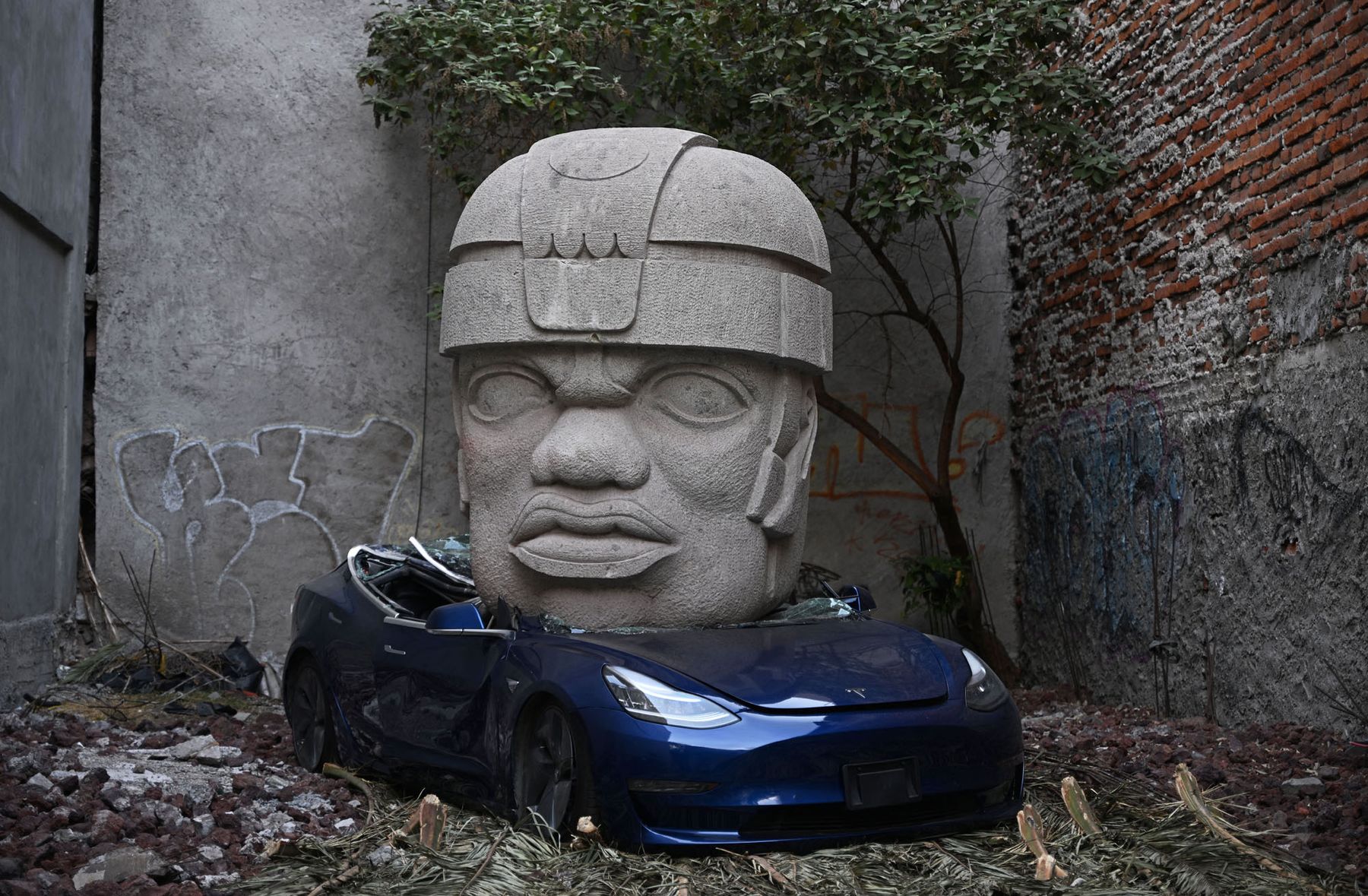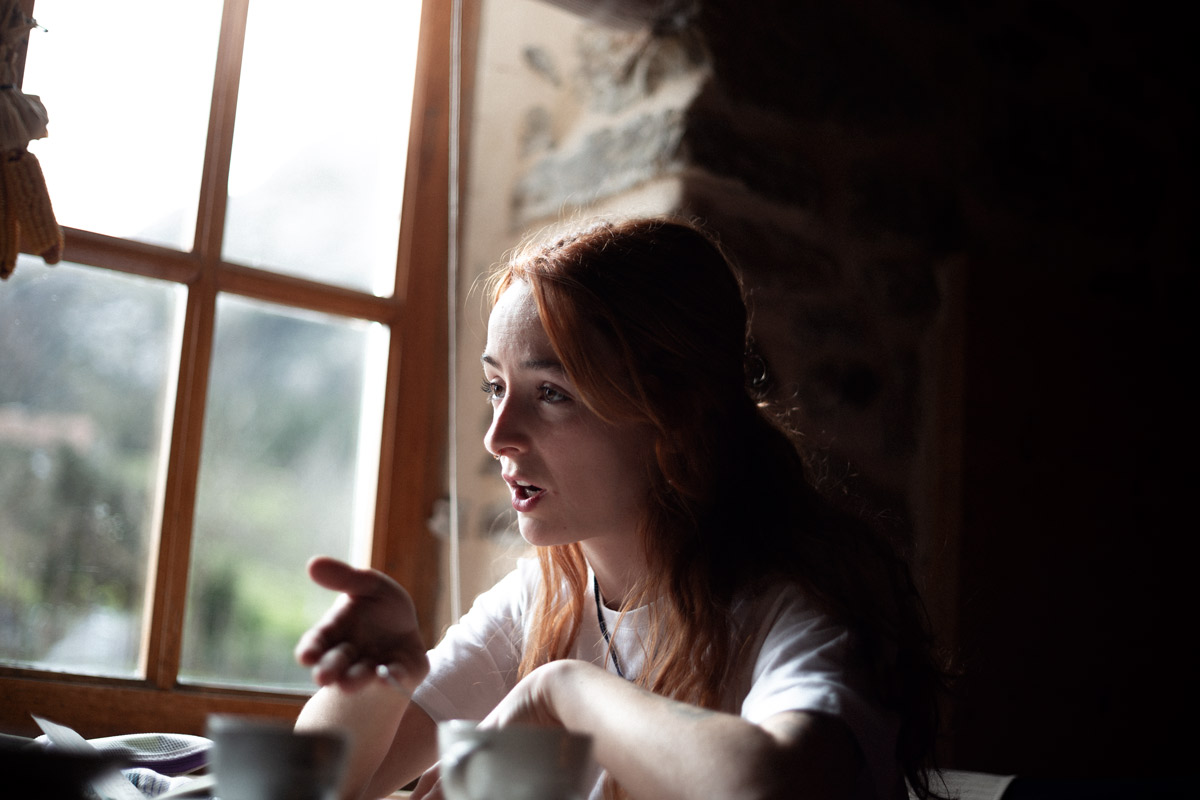In the layers of the sculpture
- From the highest point of Alzuza, the Pamplona Basin can be captured with a single look, when the border line of the 18 meters directly matches the red earth and the blue-white sky. On this hill, today green and fresh, a red concrete building stands upright, flanked by large stained glass windows facing open space and at the top we see mixed forms with sharp black angles and erpintxos. The architect Saiz de Oiza built in 2003 the Oteiza Foundation, attached to the last house of the sculptor, a modern temple that gathered the legacy of Oteiza in the simplest and most beautiful way. The last project that brings Oteiza's work into contact with contemporary looks has brought us to these coordinates of Navarra.
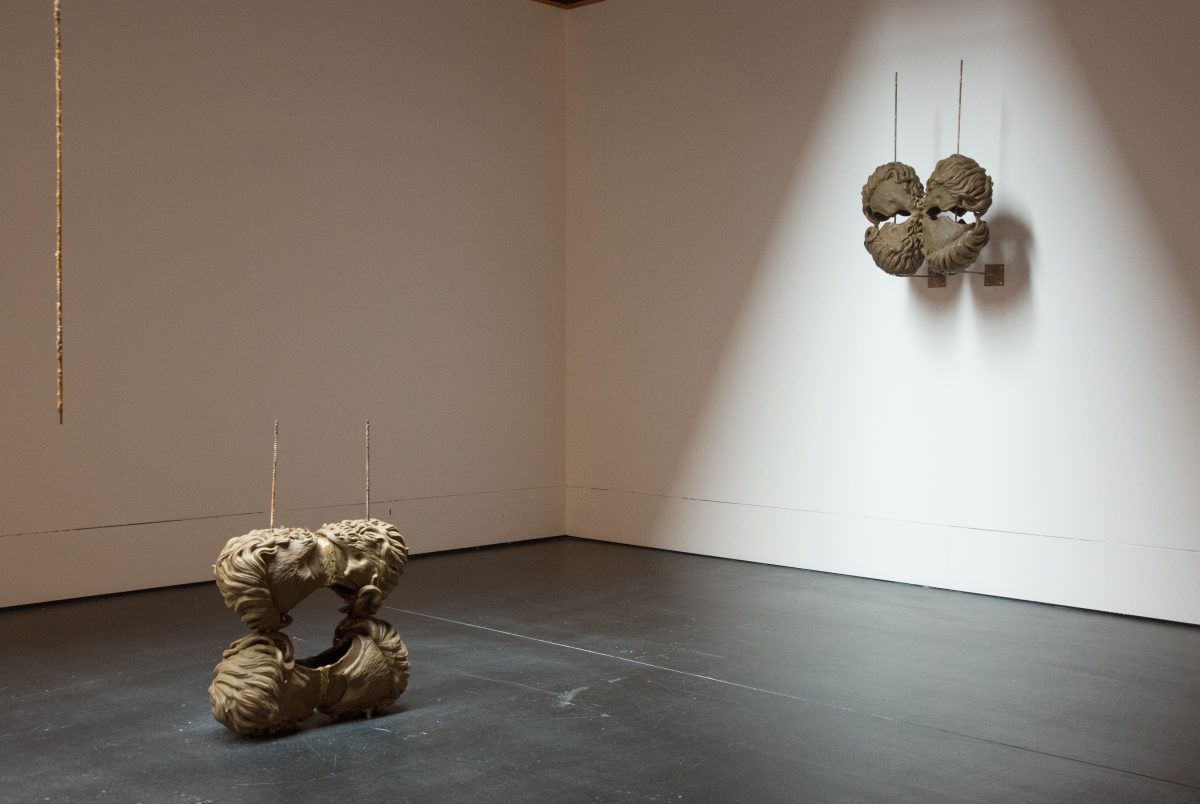
In this section of the journal we have often written the importance of relocating and transferring the artistic manifestations –exhibitions, performances, presentations, tertulias– from the logics of the attractive forces of capitals to other contexts, creating them, showing them. Personally, I am increasingly grateful for the projects carried out in non-institutional spaces, unusual places for art exhibition or other ways of doing. The Oteiza Museum, located ten kilometers from Pamplona, in the village of Alzuza, with a population of about 300, hosts specific exhibitions and activities that contribute to increasing the vitality of the museum’s usual collection, to surprise Oteiza with contemporary expressions and to attract new audiences. That is why the tour I have made to take the car and visit the exhibition Estratuartea, a project that gathers the sculptural work of three contemporary artists, has been worth it. It is a collective exhibition that focuses on the different forms and forms of doing of the forms and materials presented by the present sculpture.
In April the exhibition presented by the latest works of Nora Aurrekoetxea (Bilbao, 1989), Miren Doiz (Pamplona, 1980) and Marina González Guerreiro (A Guarda, Galicia, 1992), was opened under Commissioner Juan Pablo Huercanos. The works of three artists who work in new ways, materials and ways of making are exhibited on the ground floor of the Museum, in distributed spaces in which each has its own space to disseminate and generate echoes among them. Today, the three are a sample of the complexity that the discipline of sculpture is acquiring and of its multiple ways of doing: they approach sculpture by different ways, with a total diversity in the selection of materials and in the same origin of this material. This is what makes the project interesting, as well as the artists who have gone through this exhibition hall, always under the gaze of the Oteiza collection, are witnesses of some sample of the present sculpture such as David Bestué, Lorea Alfaro, Itziar Okariz or Fermin Jiménez Landa.
At the entrance of the exhibition there is a work by each artist, and from that initial moment you can identify the tendencies of the three artists and gestures, ranges of colors and finishes that we will see repeating barrier in space. I have then identified the works of Miren Doiz and Nora Aurrekoetxea: the first, a sculptural assembly of soft texture and shiny surface on the ground; the second, two hanging heads of the wall, in which the media has used to shape the volume of stripe paper. On one side, four bright white ceramic shells are attached to the wall, arranged from top to top and the largest has a little water as a blessed water stack found in churches. Intrigued, I've come to see for the first time the work of Marina González Guerreiro.
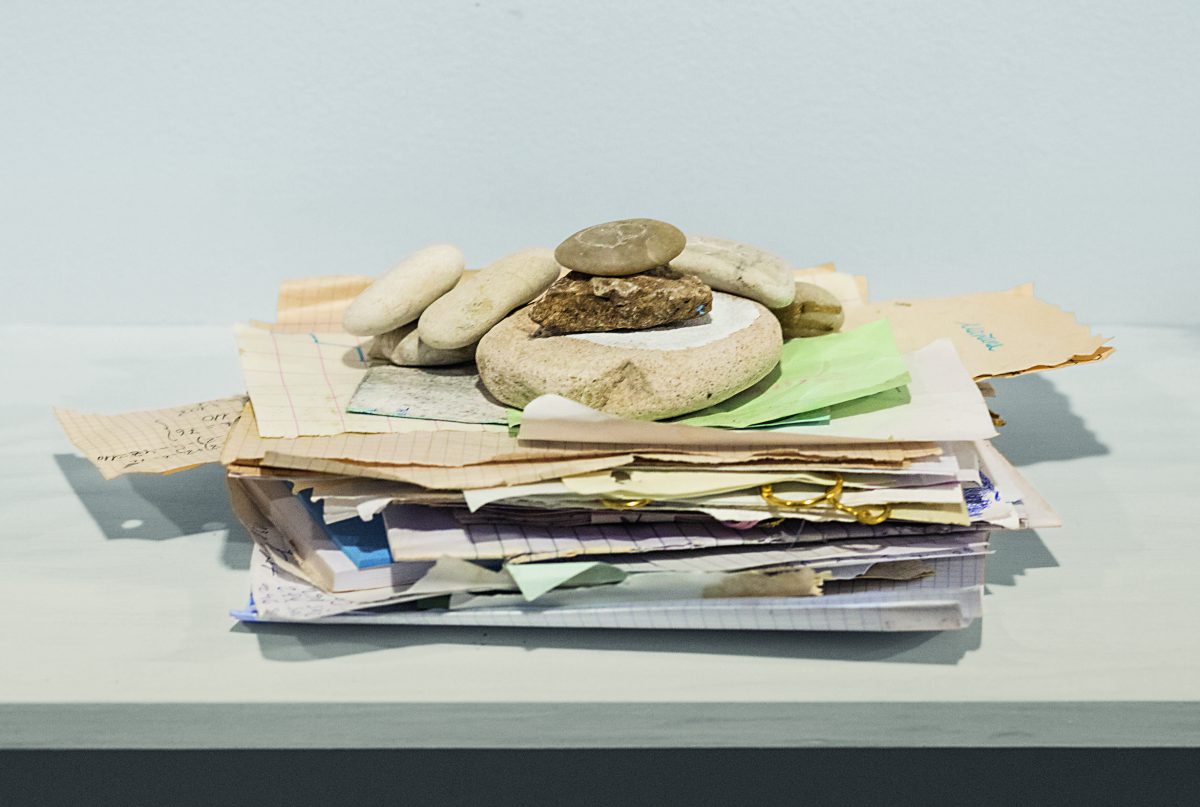
The works of González Guerreiro conceal their transitoriness. When I entered the room where her works are presented, I had the feeling of having entered the room of a teenager, I found the jewelry, the newspapers, the treasures and a fantastic atmosphere of a young woman. Far from that image we can have when talking about sculpture, we find the ones that are presented on this wooden U-shaped bald: about 30 small objects, placed next, in which the pastel, pink and blue color predominate in whim pieces with wax finishes. There are possible bright jewelers, as well as the accumulation of several handwritten notebooks and small pieces of ceramic with floral motifs on the skin. I have also observed small golden rings that have been permanently choked in wax and silicone, pill boxes, pill blisters and empty chocolate boxes refilled with a viscous paste. On the wooden bald, drawn with pencil, there are small motifs that sometimes look like a river that joins all the pieces, and between the works and filling the gaps of the pieces, there are rice grains. Then I read on the card of the exhibition that the artist’s family is selling antiques and that is when I started reading everything seen from another perspective.
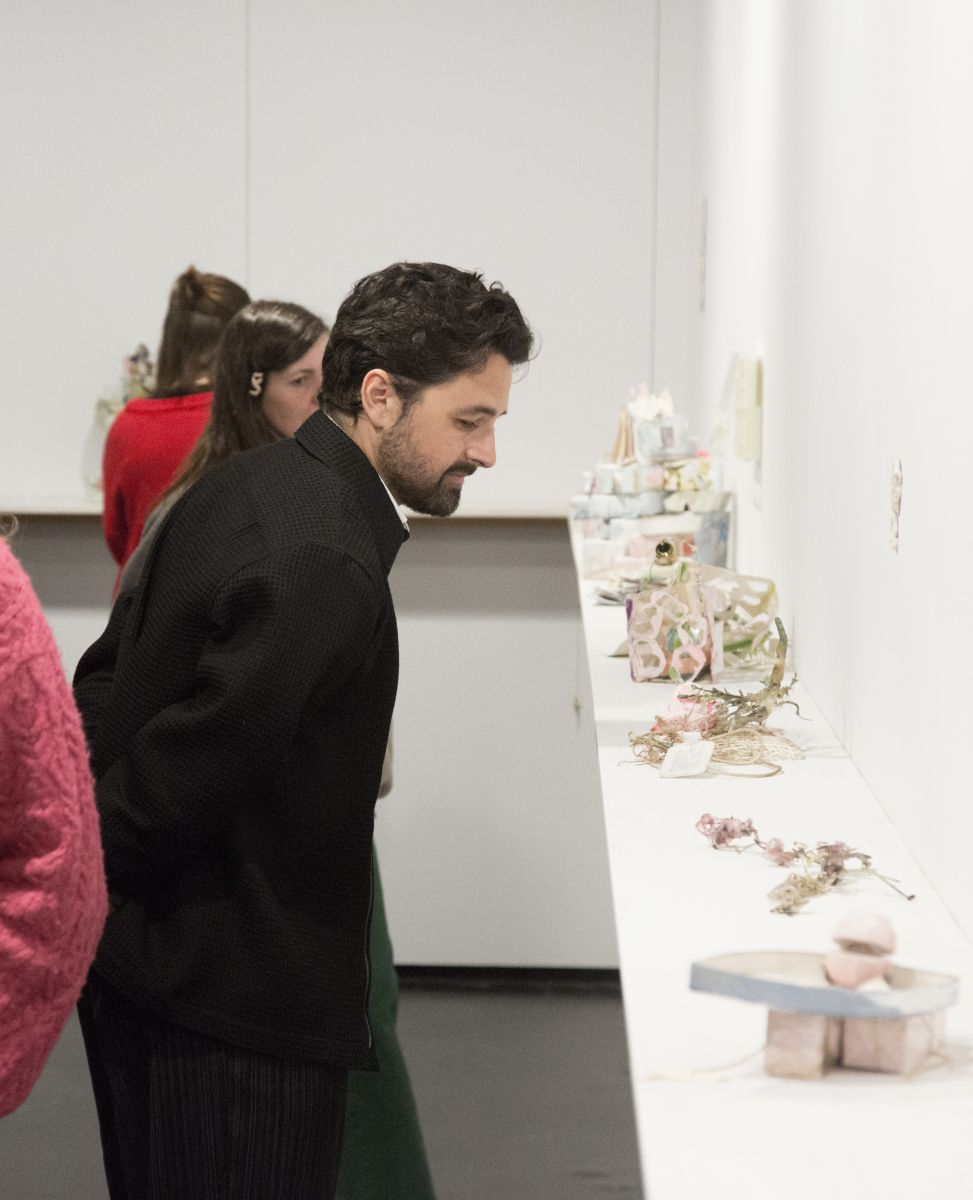
I had the opportunity to work with Miren Doiz a few years ago, and although it seems paradoxical, he was in a collective exhibition that brings together the practice of four painters, so it has made me happy to see his work now in an exhibition of sculptors in which the interdisciplinary limits are diffuse. This way of doing Doiz is constant, and there you see the commitment and honesty that the artist shows in his way of working. In a material world in which overproduction and overflow, more than the production of new objects, the artist works with the discovered, transforming the existing, giving new possibilities, uniting, overlapping, combining or gluing different materials. These joints give rise to beautiful sculptural forms in which the surface texture has a bright color and a great plasticity, and if we look carefully we can easily identify the elements he has found on his way home – iron pipes, wood slats of different sizes, carpet pieces – and his poetic compositions. Doiz has intervened in the exhibition space playing with its own architecture and undoing through painting the boundaries between wall, earth and ceiling, achieving the “trampantojo” effect.
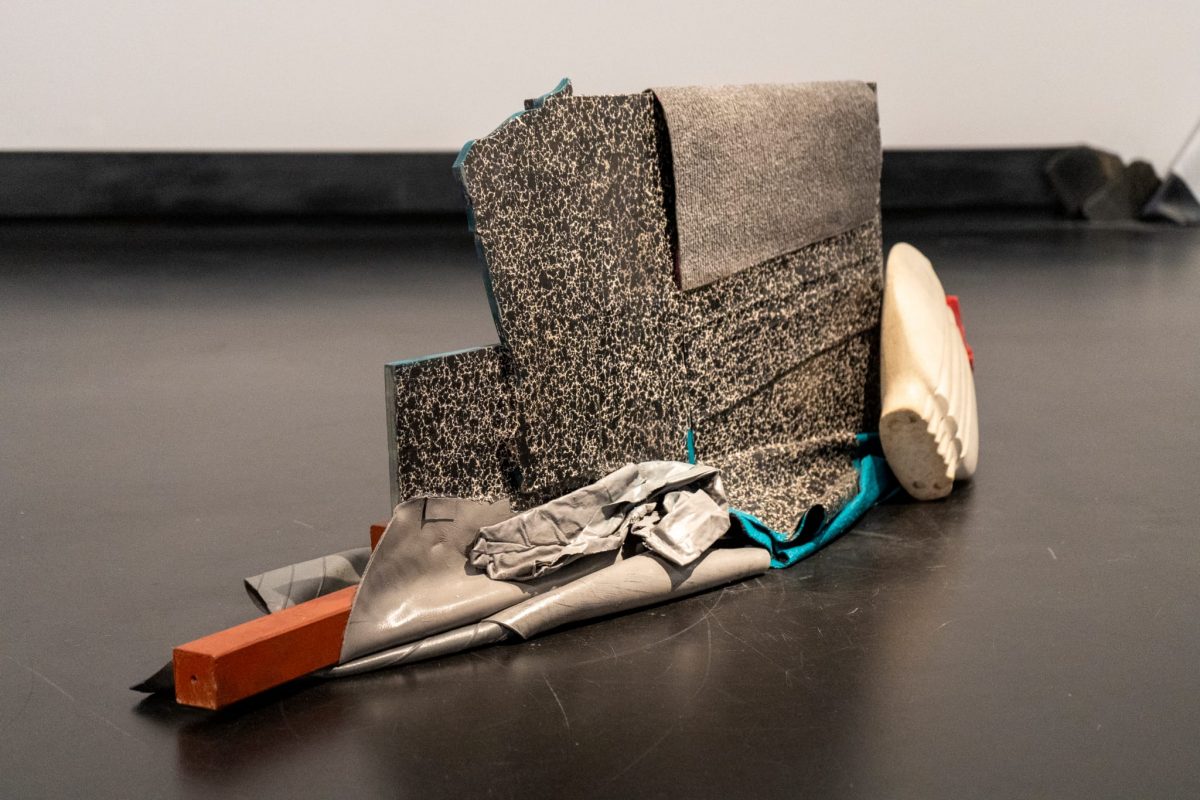
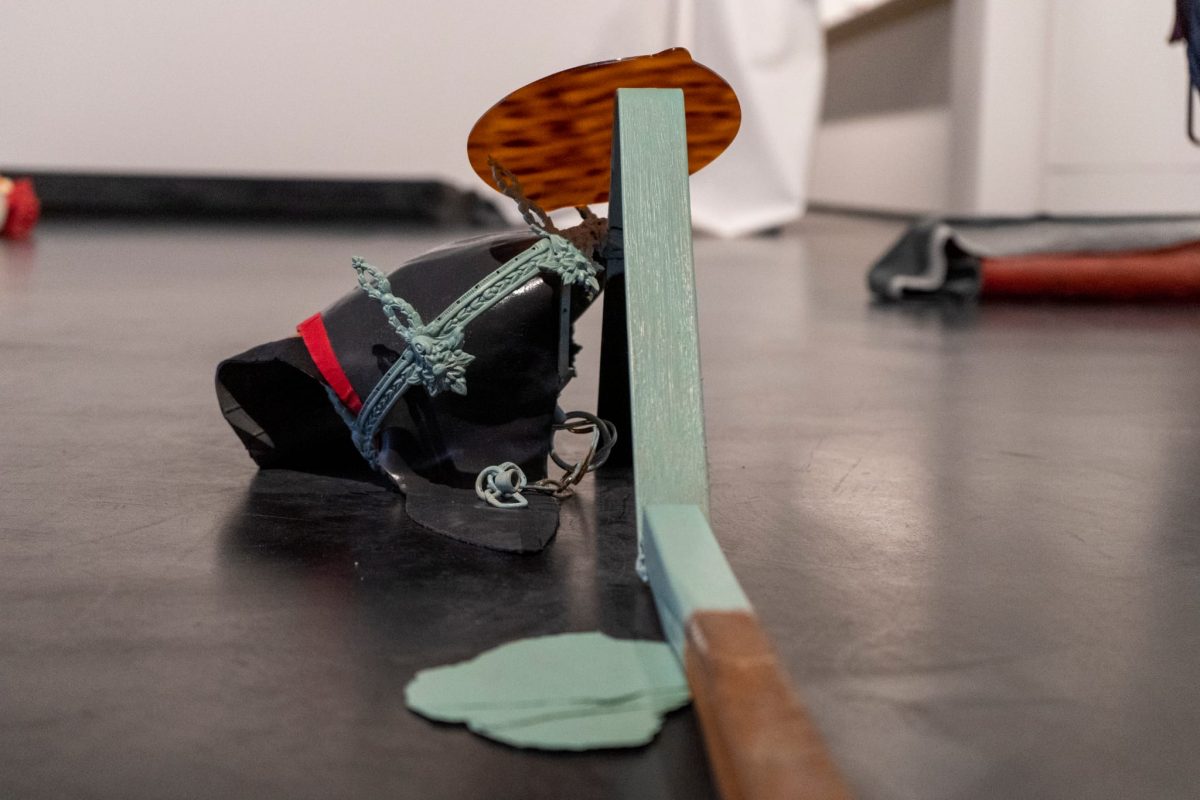
Lately I have had the opportunity to learn more about the work process of Nora Aurrekoetxea and I have seen with satisfaction the resin sculptures that were in process a few months ago elegantly installed in the room. The artist is based on the sculpture The portrait of Unamuno de Oteiza, a piece with the empty back, and with it creates biceps, pieces without head but with defined hairstyles. In the practice of Aurrekoetxea there is an absolute demand for form and ornament, to put in the center what has historically been considered superficial or not essential. Proof of this is the recent hair research, either in the form of braid or in the representation of the details of a hairstyle. The sculptures created by the artist are made of wax and resin and organized into two and four. The heads are presented crossing some rods, which are also empty inwardly, and these elements bring us closer to architectural language, to construction, witness of the artist's interest in architecture. The lukewarm light entering through the ceiling window offers an extra layer to the living room and the pieces in it and look even more stylish with the pieces of the series network, network, network, peruke scattered through space. Next to a head supported on the ground there is a folded white towel, overlooking a delicate embroidery with a loop. With this absolute altar of a whim of pleasure, I've begun the return home.
.jpg)
Painted by Millet Las espigadoras, that painting hanging from the walls of so many houses, that painting that is part of the decoration of so many shops and establishments, that work that represents a scene of the agricultural works of the past, perhaps because of its beauty, or... [+]
Martxoan Iruñean egin zen liburu denden kongresuan ezagutu nuen Elisabeth sortzaileen lana pasioz defendatzen Adimen Artifizial sortzailearen aurrean. Handik gutxira elkarrizketa egiteko gelditu ginen Bolognako Liburu Azokara eta Kolonbiara joan aurretik. Aitortzen dut... [+]
Denbora darama “ingurua intentsifikatzeko gai diren horiei” begira eta horiekin lan egiten saiatzen, horretarako gertu duenari arreta jarriz. Irudietatik, hitzetatik, argitik eta horiek espazioan agertzeko duten forma eta moduetatik egiten du lan, batez ere. Orain... [+]










